“Beginnings and endings are not interesting, audiences want the high point, which means you’ve got to get to it and get to it now – get the gun out fast, the clothes off quick. What I really want to do is produce. There isn’t much patience with a slow developing story line anymore.” – Sydney Pollack, director
Who am I to argue with a successful director? So let’s jump right in… nah, that’s not me, I need to go off on a tangent, explicate a bit first. Today is going to be another step-by-step in the fish world. The fish, locally known as abadejo (or in Chile, congrio, which everywhere else refers to a conger eel, go figure), in English, pollack. The stuff of which fish sticks are made. For many reasons, including that it’s a meaty, neutral flavored white fish and that the bone structure is really easy to remove without leaving behind pin bones.
And the preparation we’re going to talk about is chanfaina, a word with origins in Arabic that means something to the effect, paraphrasing, of “the sum is greater than the parts” – because the original chanfaina is a lamb stew of all the various innards, though in different cultures, as it has passed through Spain and on to their various former colonies, it has evolved, with different meats, different innards, etc. You can see an example here. Somewhere along the line the word also came to be used, more or less as an alternative word to sofreito, a classic slow cooked paste that is used as the basis for many Spanish speaking cultures’ stews – most often including onions, garlic and tomatoes, with a lot of variations. It makes sense, again, the harmony of the final product far outshines each individual one.
Enough? Okay. On to the recipe, Abadejo a la chanfaina
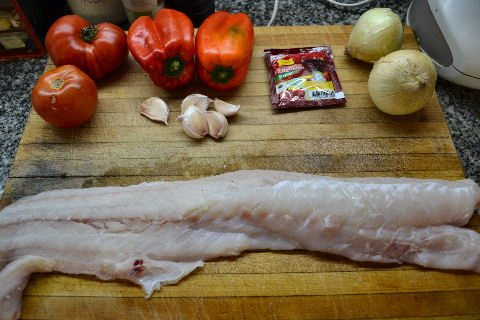
So, what do we need? Roughly 2 pounds, or a little under a kilo of abadejo, a couple each of tomatoes, red bell peppers, and onions, five cloves of garlic, and about ¼ cup of ají panca paste – you can either make your own by reconstituting the dried chilies or, the latest thing here is all the Peruvian and Bolivian vegetable stands are carrying these purees, and they’re actually quite good (you see these a lot in both those countries, though usually prepared by the person selling them and sold in little bags – it just saves time and effort in the kitchen). If you don’t have access to ají panca, go with a puree of a medium hot chili of your choice. You could also just chop up a fresh chili or two.
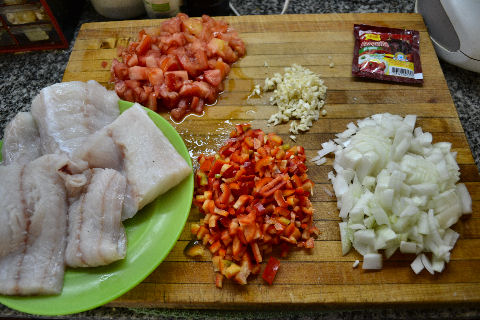
Chop up the vegetables coarsely, the garlic more finely. Cut the fish into serving pieces.
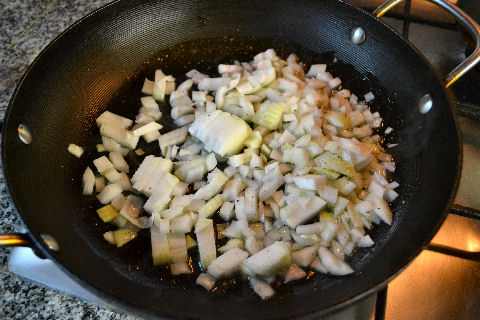
Okay, we’re going to call this the two minute rule… you’ll see. Heat a couple of tablespoons of olive oil in a large skillet over medium heat, add the onions and a large pinch of salt and a few grinds of pepper.
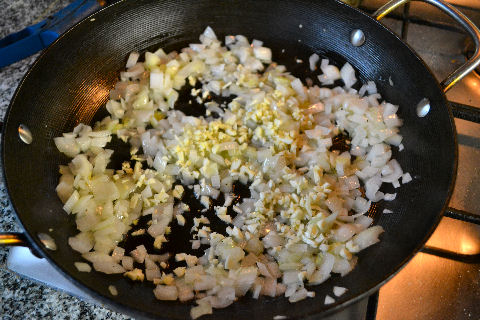
After two minutes add the garlic.
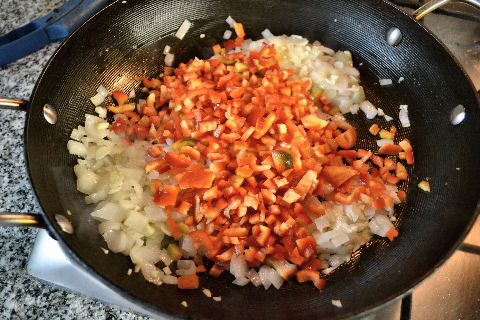
Another two minutes and add the bell peppers. I added another pinch of salt and some more pepper. (See how this is going?) If you decided to use fresh chilies I’d add them here and skip the next step.
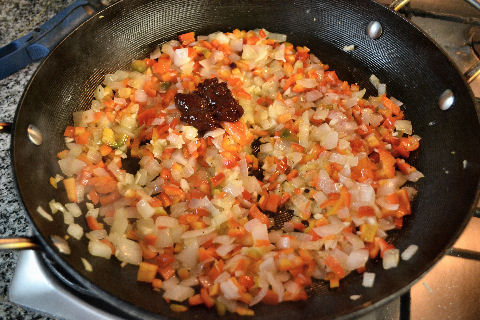
Two minutes – chili paste.
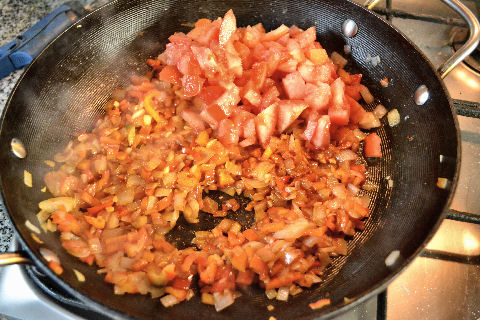
Another two, tomatoes, more salt and pepper.
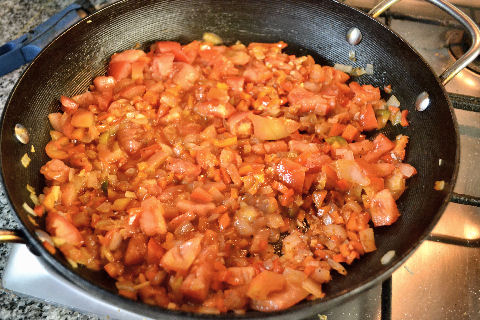
Two minutes, and this should roughly be what your chanfaina looks like – it’s not as much of a paste consistency as a sofreito typically would be – for that I’d turn the heat down low and probably cook this another 20 minutes, stirring regularly, until it all breaks down. check for seasoning, but you probably won’t need to add anything at this point, depending on the size of your salt pinches earlier on.
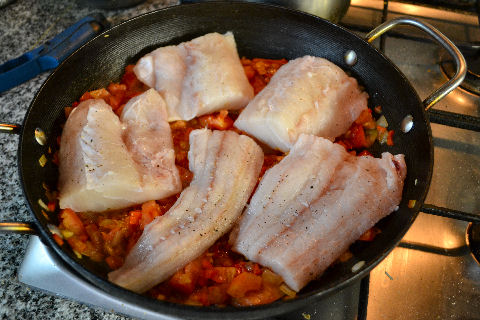
Place the fish fillets on top, sprinkle with a little salt and pepper. Cover the skillet and turn the heat down to low.
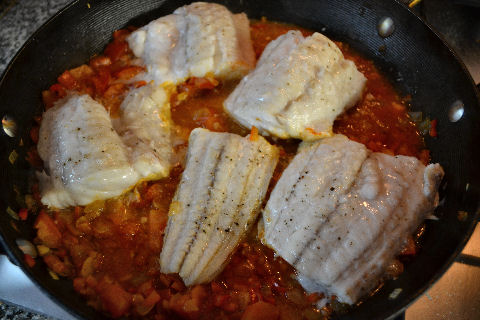
A little longer this time – depending on the thickness of the fillets, but figure about 8-10 minutes and they’ll be cooked through and have picked up a bit of the flavor from the bubbling mixture below.
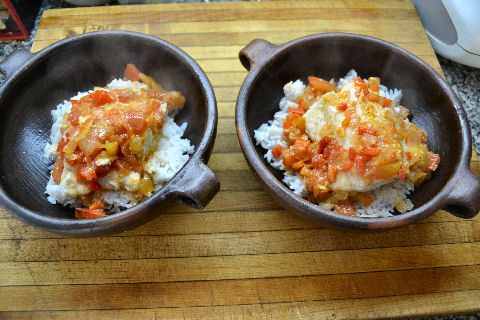
White rice. Fillet of abadejo. Scoop of chanfaina on top. Eat.
[…] Recipes: Abadejo a la chanfaina […]